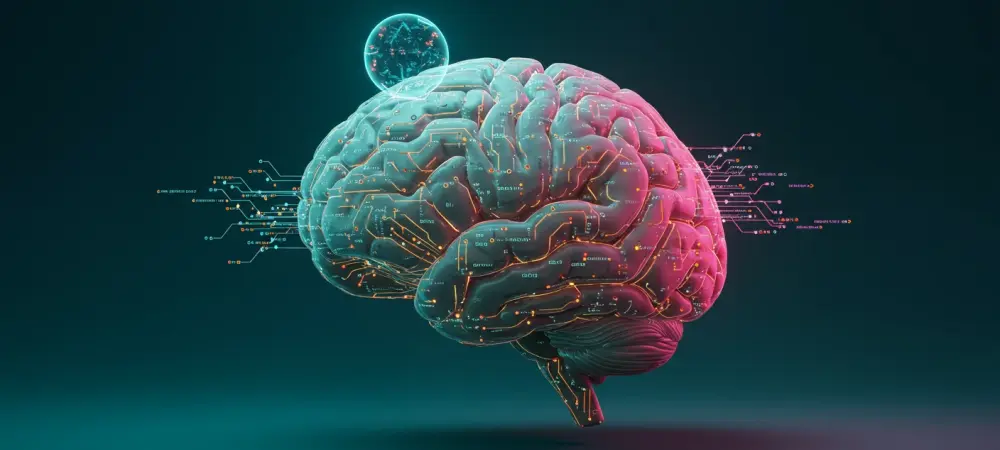Setting the Stage for Generative AI Innovation
Imagine a world where a single line of code can compose a symphony, design a breathtaking piece of art, or draft a compelling story—all without human intervention. Generative AI has turned this vision into reality, powering tools that create text, images, music, and voice with astonishing accuracy. Python, with its simplicity and robust ecosystem, stands at the forefront of this technological revolution, enabling developers to harness these capabilities effortlessly. This review dives into the most influential Python libraries shaping generative AI, exploring how they redefine creativity and problem-solving across industries.
The significance of Python in this domain cannot be overstated. Its intuitive syntax lowers the barrier to entry, allowing both novices and experts to experiment with complex AI models. Supported by a vast array of libraries, Python has become the go-to language for building generative tools, driving innovation in fields ranging from entertainment to education. The focus here is on the standout libraries that power these advancements, offering a glimpse into their unique strengths and applications.
In-Depth Analysis of Key Libraries and Features
Text Generation Powerhouses
Leading the charge in natural language processing is Hugging Face’s Transformers library, a cornerstone for tasks like text generation, translation, and summarization. Its access to pre-trained models simplifies the development of sophisticated language tools, while compatibility with frameworks like PyTorch and TensorFlow ensures flexibility across diverse projects. This library’s ability to adapt to various use cases makes it indispensable for developers aiming to craft cutting-edge text-based solutions.
Another notable tool, LangChain, excels in building complex AI systems that require multi-step reasoning and integration with external data sources. By incorporating memory and contextual understanding, it enables the creation of advanced applications such as intelligent chatbots and automated workflows. Its role in facilitating intricate interactions sets it apart as a vital asset for those tackling sophisticated generative challenges.
The OpenAI Python Library rounds out this category with its seamless integration of powerful models like GPT-4 and DALL·E. Developers can leverage these for both text and image generation with minimal coding effort, democratizing access to state-of-the-art AI. This ease of use has spurred rapid adoption, empowering creators to embed advanced functionalities into their projects without deep technical expertise.
Visual Content Creation Tools
Shifting to visual arts, the Diffusers library, built on Stable Diffusion, offers unparalleled precision in generating detailed images from text prompts. Its fine-tuned control over outputs caters to artists and designers seeking to push creative boundaries. Applications span from conceptual art to product design, highlighting its transformative potential in visual industries.
Underpinning many visual generative tools are foundational deep learning libraries like PyTorch, TensorFlow, and JAX. PyTorch is celebrated for its speed and adaptability, making it a preferred choice for research and prototyping. TensorFlow, on the other hand, shines in large-scale deployments, ensuring consistent performance across devices, while JAX gains ground in high-performance computing, particularly for GPU and TPU environments, signaling its rising prominence in demanding tasks.
Niche Solutions for Audio Creativity
In the realm of audio, Magenta stands out for music generation, crafting original melodies and compositions through AI-driven processes. Its impact is felt in entertainment, where it aids musicians and producers in exploring new creative horizons. This library exemplifies how generative AI can redefine traditional artistic domains with fresh, innovative outputs.
Equally impressive is ElevenLabs, which converts text into lifelike human speech with remarkable clarity. Its applications extend to education, media production, and accessibility solutions, offering tools for voiceovers and assistive technologies. By bridging the gap between text and sound, it opens up new possibilities for engaging and inclusive content.
Emerging Innovations and System Enhancements
Among newer entrants, PydanticAI enhances the reliability of AI systems by validating inputs and outputs, minimizing errors in integrated applications. This focus on stability is crucial for developers building robust tools that operate seamlessly across platforms. Its contribution to error reduction underscores a growing emphasis on precision in generative AI development.
Dialz introduces a unique angle with its capacity to fine-tune AI outputs, adjusting elements like tone and style while addressing potential biases. This granular control reflects a broader trend toward customization, allowing developers to tailor results to specific needs. Such tools signal a shift toward more personalized and ethically conscious AI solutions in the evolving landscape.
Broader Implications and Performance Challenges
The real-world impact of these libraries spans a wide array of sectors, from chatbots enhancing customer service to art generation tools inspiring designers. In education, voice synthesis aids learning platforms, while content creation benefits from automated writing and imagery. Python’s ecosystem lowers the threshold for innovation, enabling small teams and large enterprises alike to deploy transformative solutions.
However, challenges persist in this rapidly advancing field. High computational demands often limit accessibility, requiring substantial resources for training and deployment. Additionally, issues like model bias and the risk of generating misleading content raise ethical concerns, necessitating careful oversight. Ongoing efforts aim to improve efficiency and fairness, ensuring these tools remain both powerful and responsible.
Reflecting on Python’s Role and Next Steps
Looking back, this exploration of Python libraries for generative AI reveals a dynamic ecosystem that fuels creativity and innovation across diverse fields. Each tool, from Transformers to ElevenLabs, brings distinct strengths to the table, addressing specific needs with precision and accessibility. Their collective impact underscores Python’s dominance as the backbone of modern AI development.
Moving forward, the focus should shift to addressing resource constraints through optimized algorithms and cloud-based solutions, making generative AI more attainable for smaller players. Ethical frameworks must also evolve to mitigate risks like misinformation, ensuring responsible use. As these libraries continue to advance over the coming years, starting from 2025 onward, stakeholders are encouraged to prioritize collaboration and transparency, paving the way for a future where generative AI serves as a force for positive change.

